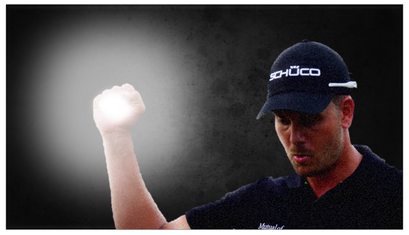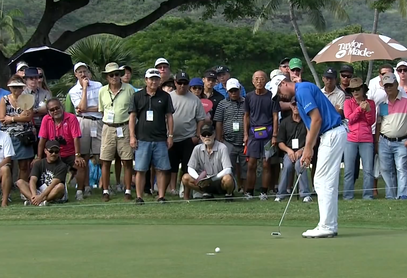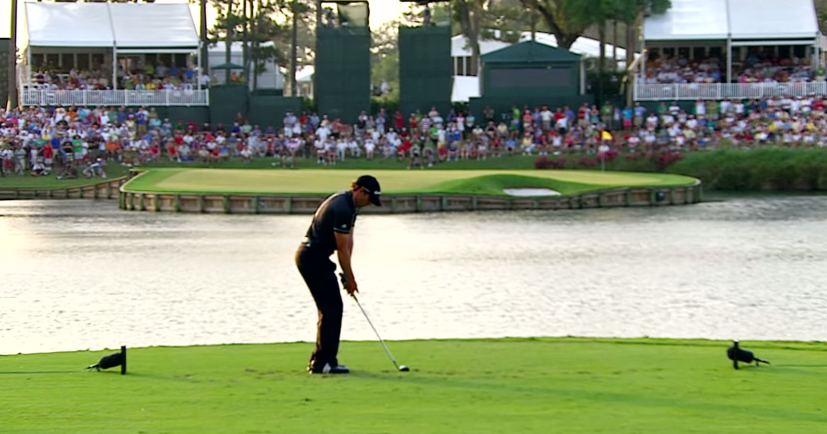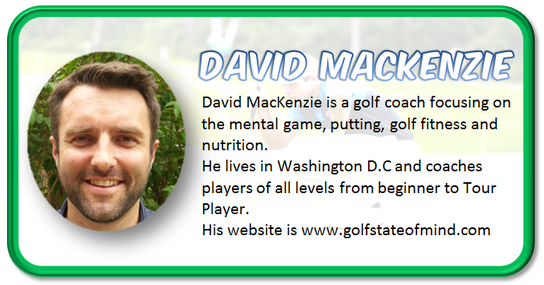 Neurolinguistic Programming, or NLP, is an approach to personal development which can help create a feeling of confidence, relaxation and focus on demand. NLP techniques were made popular by Tony Robbins, who had amazing results helping people from all different backgrounds change the way they think and create more successful lives, in a surprisingly short amount of time. But recently, NLP is being used by an increasing number golfers (of all levels) and it’s proving to be a very powerful mental game of golf technique. The basic premise of NLP is that your past experiences, which are stored in your subconscious mind, control a lot of your behaviour. For example, think of a time on the golf course when you’ve been faced with a shot over water or a greenside bunker. I’m sure one of the emotions you feel is fear. But why? It’s probably because your past experience of that particular shot was one that ended up in the water or bunker. So now, that memory is stored in your subconscious so you automatically recall that same feeling of fear when faced with a similar shot. So if the sight of the water produces a negative feeling (fear), what if we could introduce something that we have a positive association with to trigger a feeling of confidence and relaxation instead? This is what NLP is all about. It’s about associating past experience of confidence with a certain stimuli called “anchors” or “triggers”, so that feeling can be recreated on-demand. A well-known example of this is the experiments done by Pavlov on dogs. In these experiments, a bell, which was an auditory “anchor”, was sounded every time the dogs were fed. This was repeated many times over and eventually, the sound of the bell caused the dogs to salivate, without the presence of any food. In other words, the sound of the bell became a positive association for the dogs (eating) which triggered a behavior (salivation). So how do we anchor those times when we’ve felt confident and successful and use them to trigger that same feeling?  The Global NLP Institute defines anchoring as: “Anchoring is a process where a specific stimulus (cue, trigger) is connected to a memory recall, state or state change, or another response. Anchoring occurs naturally all the time. You likely have several powerful anchors in place; a certain smell may remind you of a specific person (perfume, etc). Each time you see something, it can bring you back to the state or a past memory (a photograph, a living room etc.). The same occurs when you hear a certain sound or piece of music.” What I’m about to show you is how to “anchor” great shots you’ve hit, and use it to trigger confidence on the golf course. There is no one anchor that works for everyone. E.g. some people can recall an experience better with smell (e.g. perfume), some with sound (e.g. music) and some with a verbal “key word”. The trick is find what works for you. Here’s how an example of how to use anchors and improve your mental game:
Try reinforcing this several times and introduce that that trigger into your pre-shot routine on the golf course.  Here’s another example of it in practice: When you’re practicing your putting, “anchor” the feeling of the ball going in with a single word. Words that I like (but pick whatever you want) are “beautiful” or “gorgeous”. Reinforce it by doing it several times, each time the ball goes in. Then, during your pre-putt routine on the course, right before you take the putter back, say that word in your head and it should evoke that same feeling of confidence. Another time, you could experiment with sound and see if that works better. E.g. try holding onto the sound the ball makes when it goes in the hole, and recreate that in your pre-putt routine. For a touch anchor, you could try tugging your shirt like Freddie Couples, clicking your fingers twice, or touching the knuckle on your left hand. Give these a try and find the type of anchor that works for you. I’m confident you’ll find this will equip you with a confidence booster and relaxation technique, especially in pressure situations. David MacKenzie www.golfstateofmind.com
Dave
24/1/2015 09:00:08 pm
Should you have a different anchor for each type of shot, chip putt etc or is it just for the area where u struggle? 25/1/2015 03:39:00 pm
Hi Dave, good question.
Lisa Stockholm
14/2/2015 04:11:38 pm
What happens around and for Candice High?
Candice High
17/2/2015 12:58:56 pm
Hi Lisa, I am still going strong! Currently I am working on my playing ability and lowering my score average - so I'm playing lots of golf! Have a few big amateur events coming up in March so I am preparing for them. Will be updating my blog over this week. :-)
Ben Ashdown
17/2/2015 11:06:41 am
As a Master Practitioner and Coach of NLP here in the UK, I concur with Dave's thoughts about setting anchors to achieve a really really successful drive or putt, however anchors, in my experience, are generally more powerful if they are installed with the assistance of an experienced NLP Practitioner/Coach. An experienced NLP Practitioner or Coach will be able to calibrate the 'peak' period of the memory of your 'greatest' or 'best' achievement' as you are running it and then assist you in creating and enhancing an anchor that suits you, as Dave has described, ie touch,sight,smell,taste etc Creating an anchor during this 'peak' period of your memory will provide you with the most powerful anchor and one that will assist you in achieving exceptional performance. Comments are closed.
|
Archives
June 2019
|
Proudly Supported By
Copyright © 2011 - 2018 Pro Tour Golf College
Website Managed By Golf Performance Media
All Rights Reserved
Website Managed By Golf Performance Media
All Rights Reserved



 RSS Feed
RSS Feed



